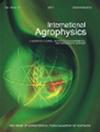半干旱气候条件下管理系统对土壤空间变异性的影响
IF 1.7
4区 农林科学
Q2 AGRONOMY
引用次数: 0
摘要
种植系统是影响地表土壤空间变异性的最重要的生物组成部分之一。在土耳其东部伊格迪尔平原农民的田地里,在玉米(玉米)、小麦(小麦)和苜蓿(苜蓿)种植系统下,在0-20和20-40厘米的深度采集了扰动和未扰动的复合土壤(网格系统的横断面,50 x 50米)。土壤空间变异性基于粘土、淤泥和沙子、碳酸钙(CaCO3)和有机质,测定了土壤的pH值、电导率、堆积密度、团聚体稳定性和抗渗透性。使用统计学和地统计学方法对数据进行了分析,结果表明,农田土壤中的空间分布模型和空间相关性水平差异很大。指数、高斯和球形半变差函数模型被发现是解释土壤性质空间结构的最佳模型。粘土和沙子、电导率、土壤有机质、堆积密度、骨料稳定性和渗透阻力在土壤深度之间存在显著差异。变差函数的土壤性质范围在58.5至305.9 m之间,表现出中等至强烈的空间依赖性。所分析的土壤变量的空间分布图的开发提供了各种土壤特性之间的比较,并提高了以区域代表的形式理解农场内异质性的可能性。可以得出结论,这些地图将有助于确定特定地点的土壤使用,并确定土壤管理的影响。本文章由计算机程序翻译,如有差异,请以英文原文为准。
Management systems impact on soil spatial variability under semi-arid climates conditions
. Cropping systems are one of the most important living components affecting the surface soil spatial variability. Composite disturbed and undisturbed soils were collected (inter-sections of the grid system, 50 x 50 m) at 0-20 and 20-40 cm depths under maize ( Zea mays ), wheat ( Triticum aestivum ), and alfalfa ( Medicago sativa L.) cropping systems from the farmer’s field, in the Igdir Plain, eastern Turkey. Soil spatial variability was based on clay, silt, and sand, calcium carbonate (CaCO 3 ) and organic matter, the pH, electrical conductivity, bulk density, aggregate stability and penetration resistance of the soil were determined. The data was analysed using both statistical and geostatistical approaches and suggested that the spatial distribution model and spatial dependence level varied significantly within the farm soils. Exponential, Gaussian, and spherical semivariogram models were found to be the best models to explain the spatial structure of the soil properties. Clay and sand, electrical conductivity, soil organic matter, bulk density, aggregate stability, and penetration resistance were found to be significantly different between the soil depths. The soil property ranges of the variogram were between 58.5 and 305.9 m and showed a moderate to strong spatial dependence. The development of spatial distribution maps for the soil variables analysed provided for a comparison to be made between the various soil properties and raises the possibility of understanding heterogeneity within the farm in the form of a regional representation. It may be concluded that these maps will assist in determining site-specific soil use and identifying the impact of soil management.
求助全文
通过发布文献求助,成功后即可免费获取论文全文。
去求助
来源期刊

International Agrophysics
农林科学-农艺学
CiteScore
3.60
自引率
9.10%
发文量
27
审稿时长
3 months
期刊介绍:
The journal is focused on the soil-plant-atmosphere system. The journal publishes original research and review papers on any subject regarding soil, plant and atmosphere and the interface in between. Manuscripts on postharvest processing and quality of crops are also welcomed.
Particularly the journal is focused on the following areas:
implications of agricultural land use, soil management and climate change on production of biomass and renewable energy, soil structure, cycling of carbon, water, heat and nutrients, biota, greenhouse gases and environment,
soil-plant-atmosphere continuum and ways of its regulation to increase efficiency of water, energy and chemicals in agriculture,
postharvest management and processing of agricultural and horticultural products in relation to food quality and safety,
mathematical modeling of physical processes affecting environment quality, plant production and postharvest processing,
advances in sensors and communication devices to measure and collect information about physical conditions in agricultural and natural environments.
Papers accepted in the International Agrophysics should reveal substantial novelty and include thoughtful physical, biological and chemical interpretation and accurate description of the methods used.
All manuscripts are initially checked on topic suitability and linguistic quality.
 求助内容:
求助内容: 应助结果提醒方式:
应助结果提醒方式:


